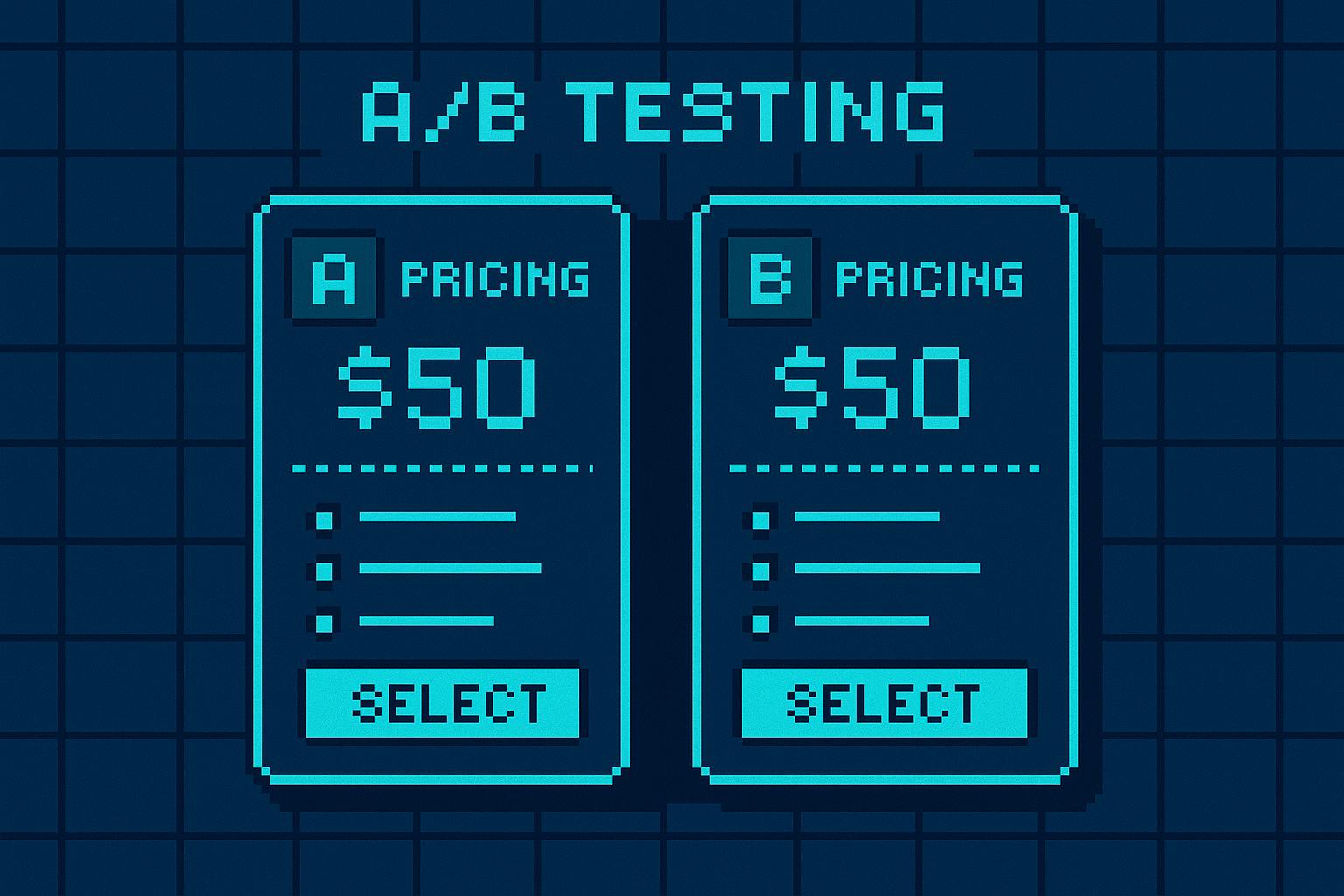Handling global payments is a common challenge for SaaS businesses. Customers expect to pay in their local currency, and managing exchange rates, transaction fees, and recurring billing complexities can be overwhelming. Here’s a quick guide to the top 7 multi-currency payment tools that simplify international transactions for SaaS companies:
- Stripe: Supports 135+ currencies, real-time exchange rates, and advanced subscription features like proration and retries for failed payments.
- Airwallex: Offers real-time currency rates, rate-lock features, and seamless API integration for subscription billing.
- Adyen: Handles 150+ currencies with local acquiring, transparent exchange rates, and tools to reduce failed transactions.
- Wise: Known for mid-market exchange rates and multi-currency accounts, but limited recurring billing features.
- Worldpay: Provides tools like Multi-Currency Pricing (MCP) and Dynamic Currency Conversion (DCC) for transparent pricing.
- Tipalti: Supports 196+ currencies, automates accounts payable, and provides detailed exchange rate insights.
- PayPal: Operates in 200+ markets, supports 25 currencies, and offers basic subscription management.
Quick Comparison
| Payment Tool | Currencies Supported | Exchange Rate Type | Recurring Billing Features | API Options | Fees |
|---|---|---|---|---|---|
| Stripe | 135+ | Real-time + markup | Advanced | REST API | 2.9% + $0.30 |
| Airwallex | 50+ | Wholesale rates | Full lifecycle support | Modern API | 0.6%-2.9% |
| Adyen | 150+ | Transparent markup | Advanced | Unified API | Custom pricing |
| Wise | 40+ | Mid-market rates | Limited | Simple API | 0.43%-2% |
| Worldpay | 120+ | Competitive rates | Enterprise-grade tools | Robust API | Custom pricing |
| Tipalti | 196+ | Multi-bank comparison | Comprehensive | Enterprise API | Custom pricing |
| PayPal | 25 | Market rates + markup | Basic | Well-documented | 2.9% + $0.30 |
Each platform has strengths tailored to specific needs. Stripe and Adyen excel in subscription management, Wise offers cost-effective transfers, and Tipalti is ideal for enterprise-level payout automation. Choose based on your SaaS business's size, transaction volume, and global reach.
How Do You Manage Multi-currency SaaS Projects Effectively? - All About SaaS Finance
1. Stripe
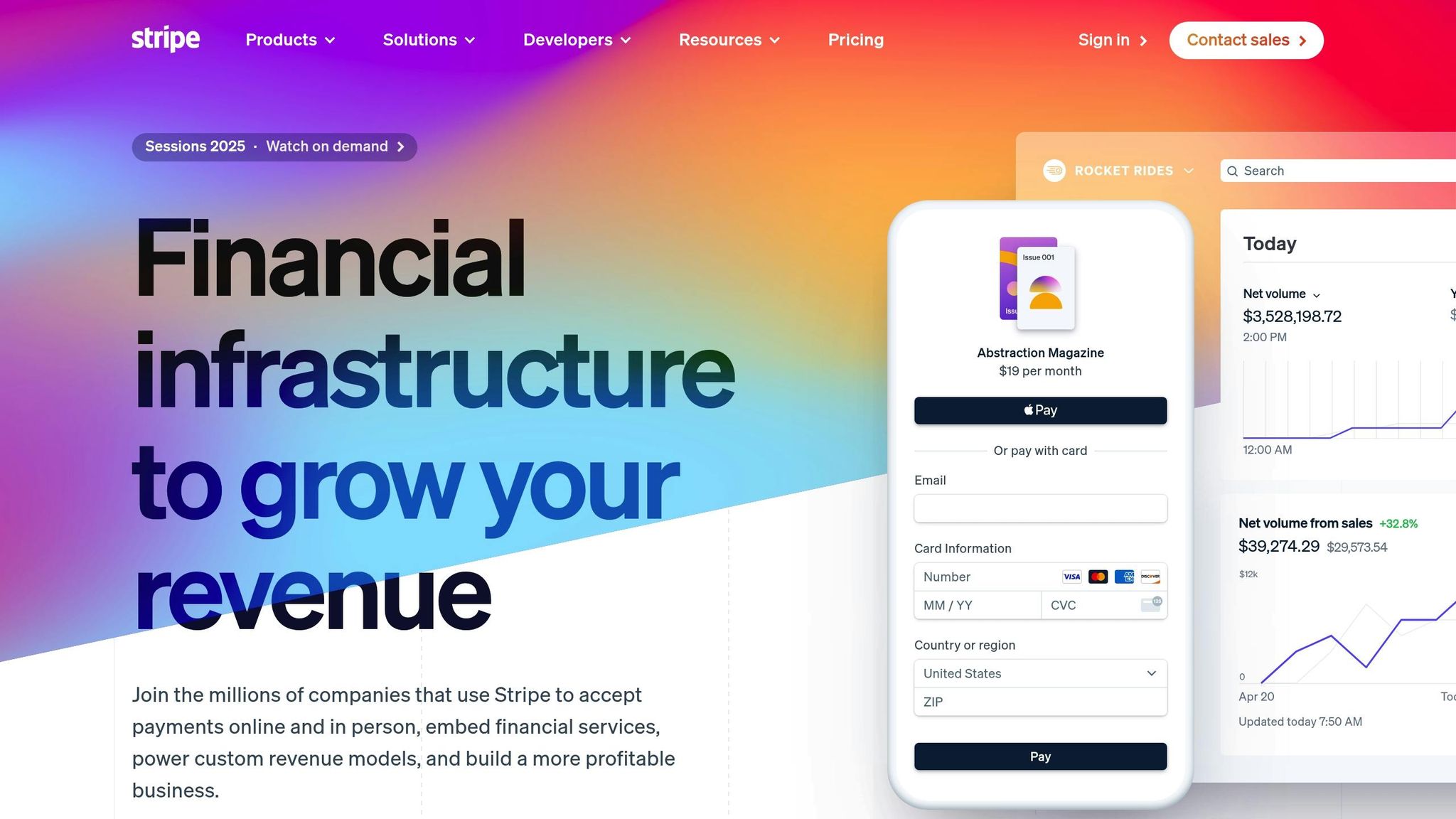
Stripe has positioned itself as a top choice for payment processing, especially for SaaS companies. It simplifies the challenges of handling multi-currency transactions and offers flexible tools for subscription-based businesses. With Stripe, you can accept payments in various currencies and leverage a range of payment methods tailored to customer preferences.
Currency Support
Stripe supports a broad array of currencies, including major ones like USD, EUR, GBP, and JPY, as well as emerging market currencies such as the Brazilian Real and Indian Rupee. Its presentment currency feature allows businesses to charge customers in their local currency while receiving payouts in a preferred currency. For example, a customer in Germany can pay in euros, but you can settle the payment in US dollars, making cross-border transactions smoother.
Additionally, Stripe caters to local payment preferences. For instance, European customers can use SEPA Direct Debit, while Dutch customers have access to iDEAL. Offering familiar payment methods often improves customer trust and boosts conversion rates.
This extensive currency and payment method support ensures businesses can cater to global audiences with ease.
Exchange Rate Transparency
Stripe provides real-time exchange rates and clearly outlines any associated conversion fees upfront. Its detailed reporting tools allow businesses to track foreign exchange fees, giving a precise understanding of revenue and costs across markets. The dashboard also breaks down conversions by currency and time period, helping you spot trends and refine pricing strategies.
This level of transparency pairs seamlessly with Stripe's billing features, making it easier to manage multi-currency operations.
Recurring Billing Features
Stripe's Billing product is a game-changer for SaaS companies managing subscription models. It handles currency conversions for recurring payments, ensuring stability in billing cycles even when exchange rates fluctuate. The platform also supports custom pricing tiers for different regions, allowing businesses to tailor their offerings to local markets.
To reduce involuntary churn, Stripe's Smart Retries feature automatically reattempts failed payments, addressing issues like currency or banking-related errors. It also supports proration across currencies, making it easy to adjust charges when customers upgrade or downgrade their plans mid-cycle.
API and Integration Capabilities
Stripe's REST API makes it simple to build custom multi-currency solutions. The API handles currency conversion logic for you, eliminating the need to manage exchange rates manually. You just specify the desired currency for a charge, and Stripe takes care of the rest, including compliance with local regulations.
The platform also integrates seamlessly with tools like Salesforce, HubSpot, and QuickBooks, ensuring that transaction data is automatically updated across your systems. This automation helps sales and accounting teams stay on top of revenue streams without extra effort.
Additionally, Stripe's API and webhooks provide real-time updates on payment events, including currency-related details. These notifications allow businesses to set up automated workflows to address issues like failed payments or other transaction challenges, ensuring smooth operations.
Stripe's combination of multi-currency support, clear exchange rate management, and robust integration options makes it a powerful choice for SaaS businesses looking to scale globally.
2. Airwallex
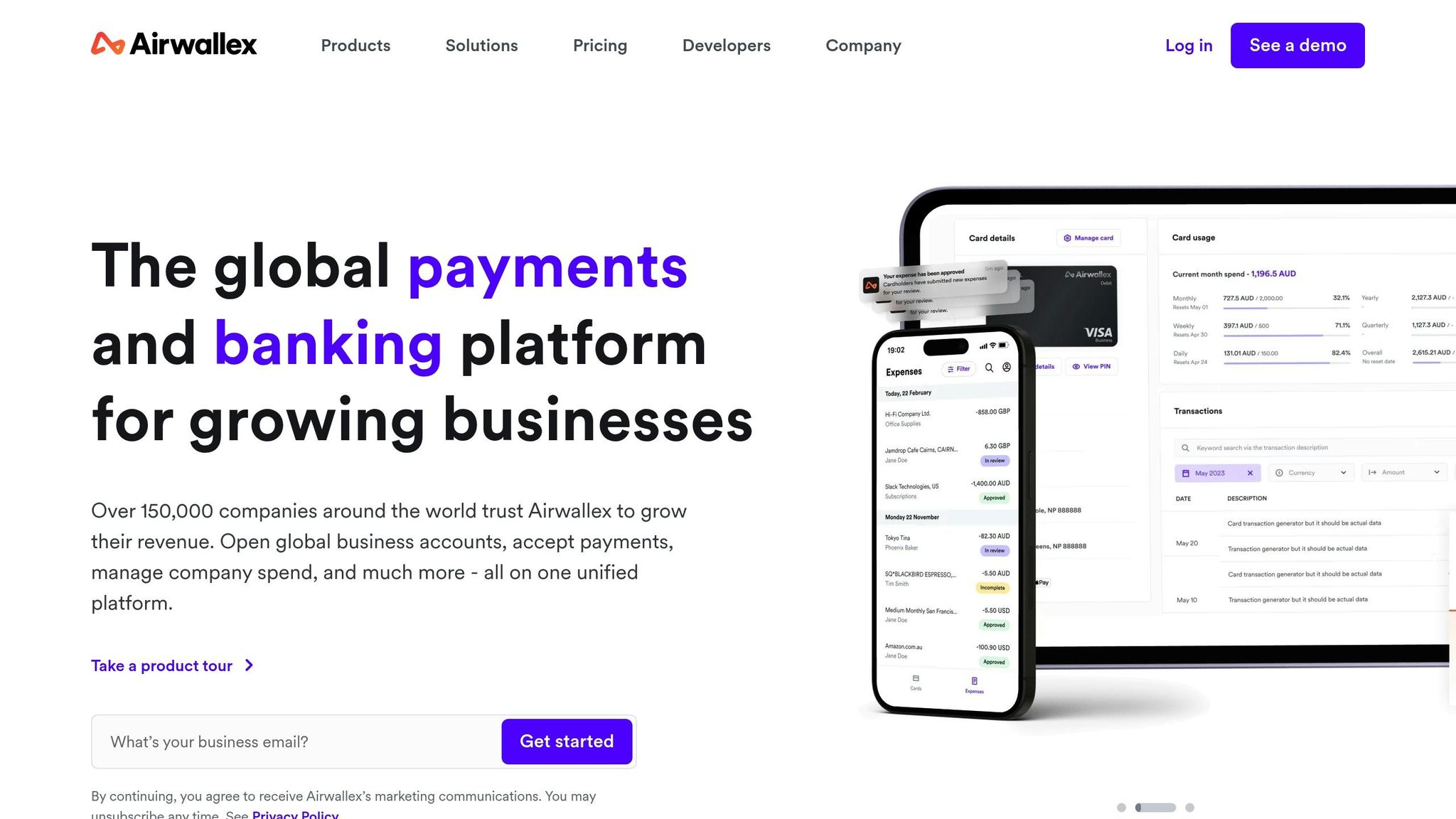
Airwallex offers a blend of payment processing and financial tools tailored for SaaS companies handling cross-border payments and multi-currency transactions.
Currency Support
With Airwallex, businesses can manage funds in multiple currencies, avoiding immediate conversions and potentially reducing foreign exchange (FX) fees. The platform also enables domestic bank transfers in major markets, which can speed up processing and cut costs for customers. Additionally, Airwallex provides real-time currency rates, giving businesses clear visibility into every transaction.
Exchange Rate Transparency
To help SaaS companies manage FX expenses and pricing strategies, Airwallex displays live exchange rates alongside detailed transaction reports. The platform also includes a rate-lock feature, which can be particularly useful for stabilizing subscription billing against currency fluctuations.
API and Integration Capabilities
Airwallex's REST API supports custom payment flows, real-time currency conversions, and multi-currency invoicing. It integrates seamlessly with popular business tools, automating tasks like data syncing and reconciliation. Features like real-time notifications and batch payment options simplify payments to vendors and contractors, making operations more efficient.
3. Adyen
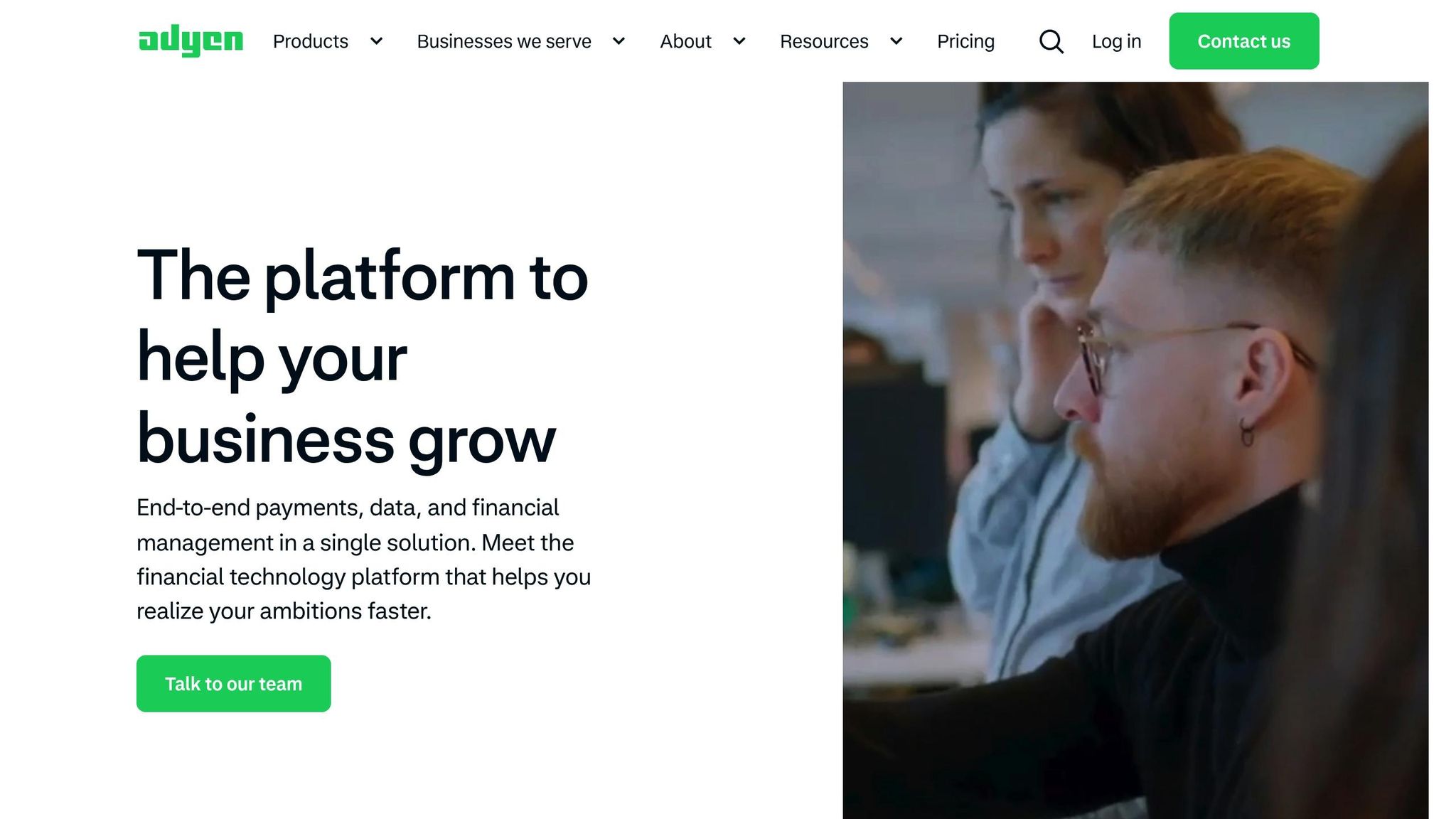
Adyen is a payment platform built to simplify multi-currency transactions for SaaS businesses through a single integration. Trusted by global giants like Spotify, Uber, and Netflix, it’s designed to handle payments for worldwide subscription models with ease.
Currency Support
Adyen supports over 150 currencies, allowing businesses to accept payments in their customers' local currencies while settling in the currency of their choice. The platform takes care of currency conversion automatically, enabling localized pricing without extra effort. This can significantly reduce cart abandonment rates, as customers see familiar currency symbols and amounts during checkout.
It also offers local acquiring in more than 40 countries, processing payments through local banking networks rather than international ones. This approach not only lowers transaction fees but also improves authorization rates - critical for SaaS businesses relying on recurring payments, where failed transactions can directly affect revenue.
Exchange Rate Transparency
Adyen ensures clear pricing with its transparent exchange rate management. Through its merchant dashboard, businesses can access real-time exchange rate data, showing exactly what rates are applied to each transaction. Rates are updated multiple times daily, with separate exchange fees clearly outlined for better financial clarity.
The platform’s reporting tools provide detailed insights into revenue by currency and region, helping finance teams track performance across markets. This level of detail enables SaaS companies to fine-tune their pricing strategies and assess the impact of currency fluctuations on their overall revenue.
Recurring Billing Features
Adyen simplifies recurring billing for SaaS companies. Its subscription management features handle complex billing scenarios like prorated charges, plan upgrades, and managing failed payments. The platform automatically retries failed payments using optimized timing and alternative payment methods, reducing involuntary churn.
Additionally, Adyen’s Account Updater service keeps subscription payments running smoothly by automatically updating card details when customers' payment information changes. This is especially useful for annual subscriptions, where customers may forget to update expired or replaced card details.
API and Integration Capabilities
Adyen’s unified API enables SaaS companies to manage various payment methods and currencies through a single integration. It also supports webhooks for real-time payment updates, allowing businesses to trigger immediate actions based on payment status.
The platform integrates seamlessly with popular SaaS tools like Salesforce, HubSpot, and accounting systems, helping automate revenue recognition and customer lifecycle management. For platforms facilitating payments between multiple users - such as marketplaces - Adyen’s MarketPay solution handles split payments and fund management efficiently, all within one integration.
4. Wise (formerly TransferWise)
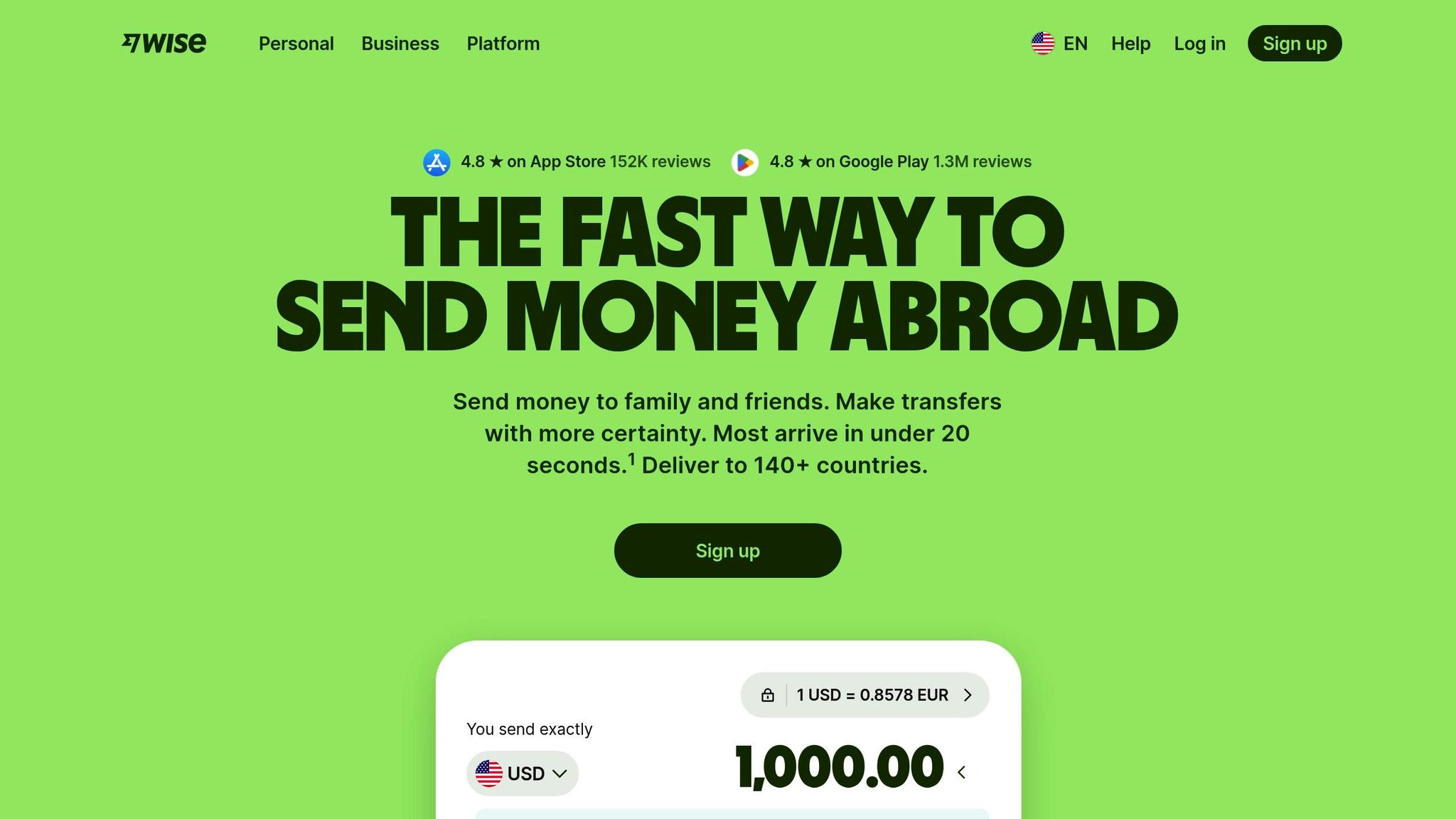
Wise, originally known for personal money transfers, has expanded its services to cater to businesses, offering transparent international transactions and multi-currency features that are particularly useful for SaaS companies. With its focus on clarity and simplicity, Wise provides tools that make managing funds across currencies straightforward and cost-effective.
Currency Support
Wise's multi-currency account allows businesses to hold and manage balances in various currencies. Companies can receive payments with local bank details in multiple regions, simplifying global operations and removing the need for maintaining several international bank accounts.
Exchange Rate Transparency
One of Wise's standout features is its commitment to fair and transparent exchange rates. It uses the mid-market rate - free from hidden markups - and clearly outlines any fees upfront. This approach gives finance teams a clear understanding of the actual costs involved in every international transfer.
sbb-itb-a989baf
5. Worldpay
Worldpay provides multi-currency solutions designed to help SaaS businesses expand their reach globally. Its infrastructure supports a wide range of currencies, enabling businesses to accept payments in local currencies seamlessly.
Currency Support
Worldpay's Multi-Currency Pricing (MCP) feature displays converted prices upfront, giving customers clarity on costs before they complete their purchase. Additionally, the platform includes Dynamic Currency Conversion (DCC), which offers cardholders the option to view and pay in their billing currency. The DCC screen clearly shows key details like the billing currency, local currency, exchange rate, and any markup (e.g., "Includes 3% Margin") before checkout. These tools integrate smoothly with Worldpay's services, making it a strong choice for international SaaS businesses.
Exchange Rate Transparency
Merchants using Worldpay can customize their foreign exchange (FX) markups for local pricing and access real-time rates updated every 30 minutes. To help manage currency risks, businesses can lock in rates for payouts up to 30 days and for acquiring up to 3 days. While Worldpay has taken steps to improve transparency around exchange rates, some users still report challenges in finding clear information about its overall fee structure on their website.
6. Tipalti
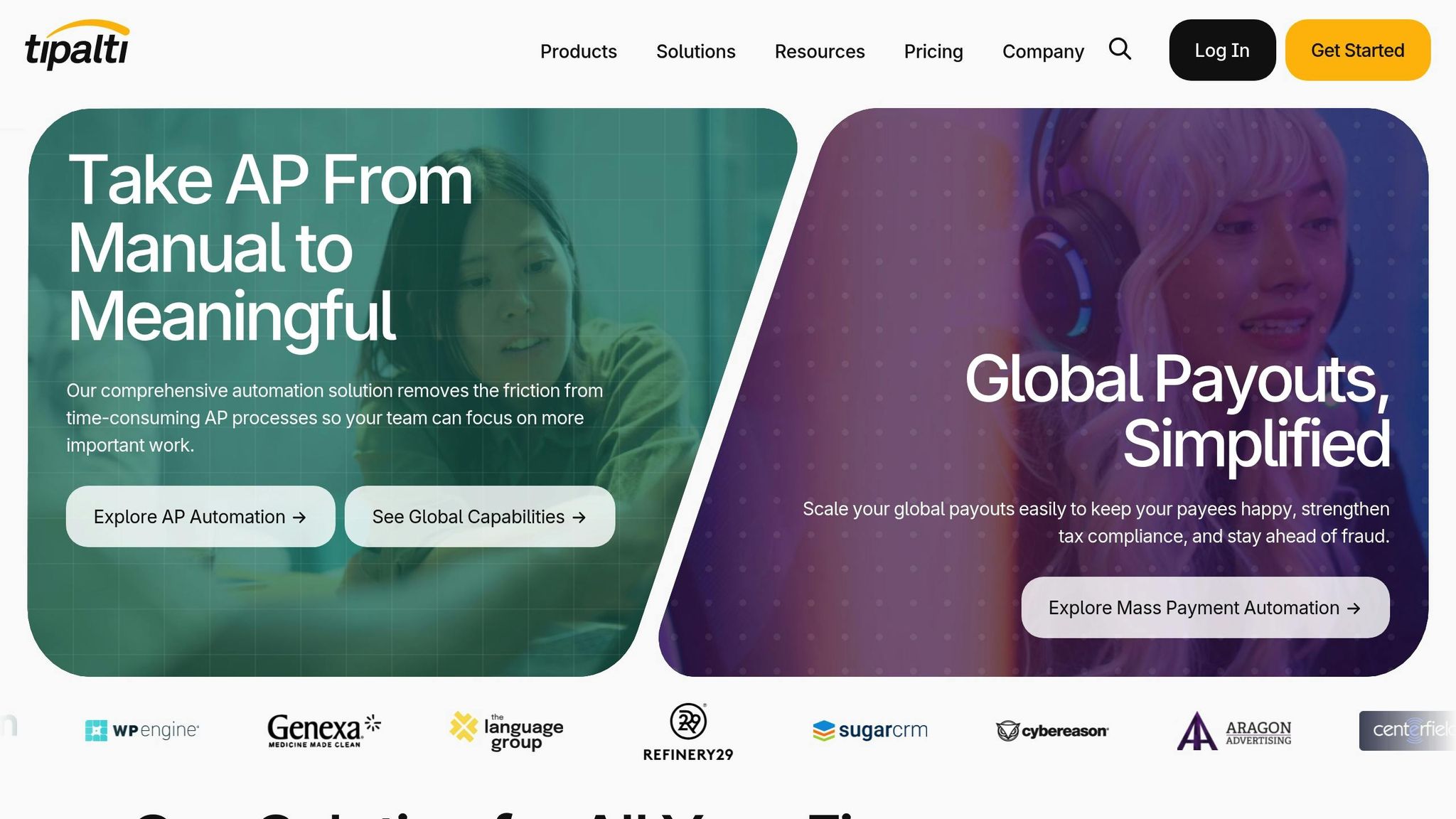
Tipalti is a platform that simplifies accounts payable and global payments, making it easier for SaaS businesses to manage payouts to suppliers, contractors, and partners around the world. With its ability to handle multiple currencies, it streamlines international transactions and ensures smooth payment processes.
Currency Support
Tipalti offers robust support for a variety of currencies and payment methods, making it a versatile choice for businesses operating globally. It handles currency conversions efficiently, ensuring recipients are paid in their local currency. Plus, it integrates seamlessly with popular accounting systems, helping businesses maintain accurate and consistent financial records.
Exchange Rate Transparency
One standout feature is the platform's transparent exchange rate information. Before processing payments, finance teams can review conversion rates, ensuring clarity. Additionally, Tipalti provides lock-in options for scheduled payments, which are particularly useful for managing recurring international expenses within a set budget.
API and Integration Capabilities
Tipalti's API takes automation to the next level by streamlining accounts payable tasks, from processing invoices to executing payments and monitoring their status. The platform also integrates with key business tools frequently used by SaaS companies. It even automates commission payments for sales teams or affiliate partners, using billing data to ensure accuracy.
Next, we’ll take a closer look at how PayPal handles multi-currency transactions for SaaS businesses.
7. PayPal
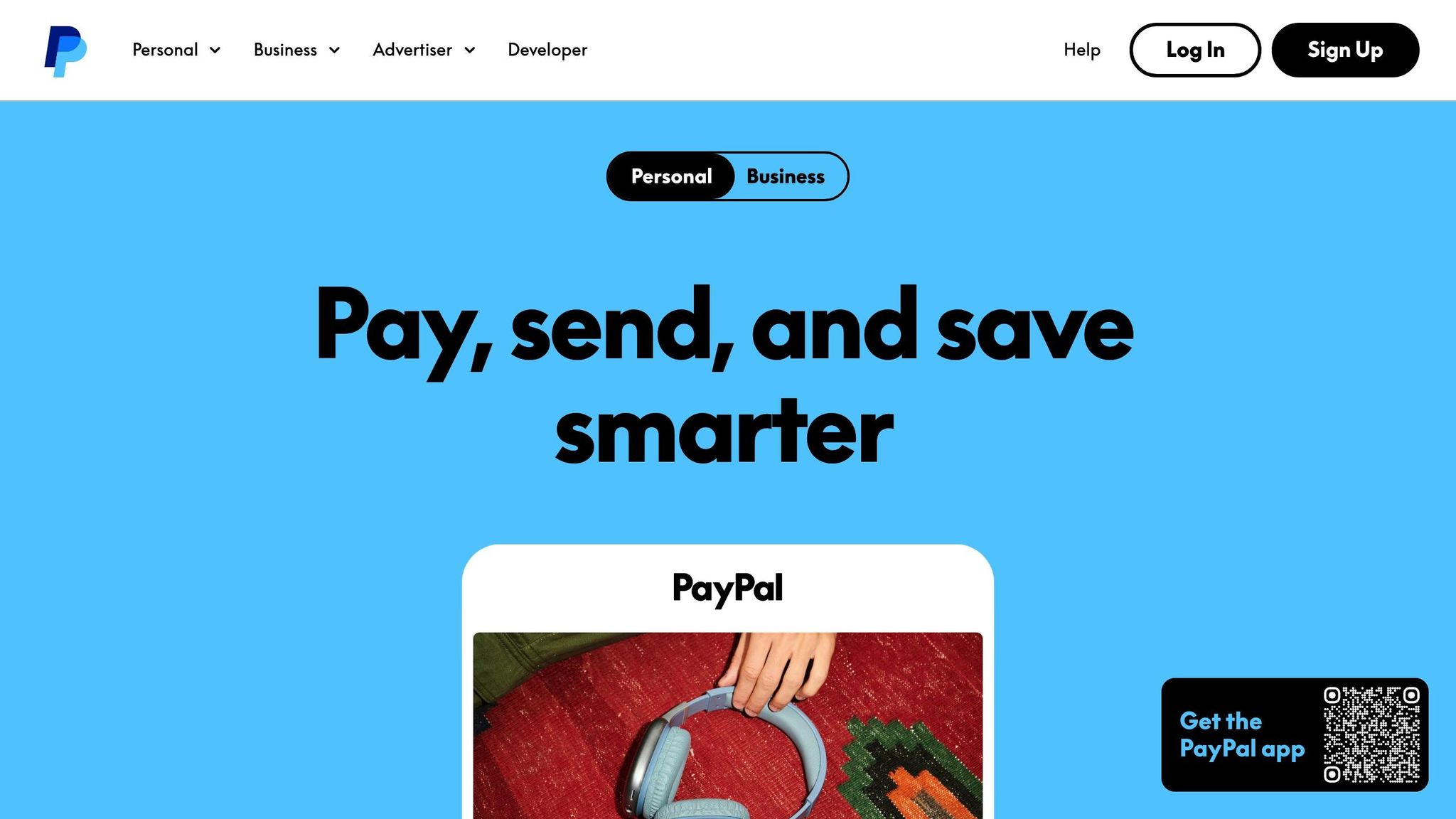
PayPal is a well-known platform that simplifies multi-currency transactions, making it a reliable choice for SaaS businesses aiming to manage global revenue streams. While it's often thought of as a consumer payment tool, its business solutions are packed with features designed to support international operations.
Currency Support
Operating in over 200 markets and supporting 25 currencies, PayPal automatically detects customer locations to display local currency options during checkout. This feature helps reduce cart abandonment by creating a smoother customer experience. Businesses can receive payments in their preferred currency while allowing customers to pay in theirs.
PayPal Checkout integrates seamlessly into SaaS billing systems, supporting major currencies like USD, EUR, GBP, CAD, AUD, and JPY. For companies handling payments in multiple currencies, PayPal's multi-currency receiving feature allows businesses to hold balances in different currencies and convert them when exchange rates are favorable.
Exchange Rate Transparency
PayPal provides real-time exchange rates with a small markup, ensuring businesses have a clear understanding of conversion costs. Detailed reports show both the original and converted amounts, and the rates are updated frequently to align with market conditions.
For business account holders, this transparency makes it easier to reconcile international revenue and assess the impact of currency fluctuations. PayPal also allows businesses to decide whether to accept payments in the customer’s currency or convert them immediately to the base currency, offering flexibility at the point of sale.
Recurring Billing Features
PayPal supports various subscription models, including monthly, quarterly, and annual billing. Its API-driven system makes it easy to manage plan changes, proration, and even trial periods or setup fees, giving SaaS companies the flexibility to customize their pricing structures.
API and Integration Capabilities
PayPal's robust API and SDK provide extensive integration options for SaaS platforms. These tools support subscription management, payment processing, and real-time updates through webhook notifications. The Instant Payment Notification (IPN) system ensures businesses are immediately informed of payment completions, failures, or disputes.
The platform also integrates with widely used SaaS tools and accounting software like QuickBooks, Xero, and Salesforce. Additional features, such as Pay in 4 and PayPal Credit, offer customers flexible payment options, which can help improve conversion rates.
For SaaS companies concerned about PCI compliance, PayPal's hosted checkout solutions handle sensitive payment data, reducing the compliance workload. The platform also includes fraud protection tools and seller protection policies to help mitigate risks like chargebacks and fraudulent transactions.
Up next, we’ll compare how these seven multi-currency payment tools stack up across key features that matter most to SaaS businesses.
Feature Comparison Table
When selecting a multi-currency payment tool, it's crucial to weigh the features that align with your SaaS business needs. The table below highlights the core capabilities of popular platforms for handling international payments.
| Payment Tool | Currency Support | Exchange Rate Type | Recurring Billing Support | API Quality | Starting Transaction Fees |
|---|---|---|---|---|---|
| Stripe | 135+ currencies | Real-time market rates + markup | Native subscription management | Comprehensive REST API with extensive documentation | 2.9% + $0.30 per transaction |
| Airwallex | 50+ currencies | Competitive wholesale rates | Full subscription lifecycle support | Modern API with webhook support | 0.6% - 2.9% depending on region |
| Adyen | 150+ currencies | Direct bank rates + transparent markup | Advanced recurring payment features | Unified API for all payment methods | Custom pricing (typically 0.6% - 2.9%) |
| Wise | 40+ currencies | Mid-market exchange rates | Limited recurring capabilities | Simple API focused on transfers | 0.43% - 2% depending on currency pair |
| Worldpay | 120+ currencies | Competitive rates with volume discounts | Enterprise-grade subscription tools | Robust API with extensive integration options | Custom pricing based on volume |
| Tipalti | 196+ currencies | Multi-bank rate comparison | Comprehensive billing automation | Enterprise API with advanced features | Custom pricing for enterprise clients |
| PayPal | 25+ currencies across 200+ markets | Market rates + PayPal markup | Basic subscription management | Well-documented API with broad integration support | 2.9% + $0.30 per transaction |
Key Takeaways
- Currency Support: Tipalti leads the pack with support for 196+ currencies, making it ideal for businesses with extensive global operations. In contrast, PayPal supports only 25 currencies despite its reach across 200+ markets. Adyen and Stripe strike a balance with broad currency options and global availability.
- Exchange Rates: Wise offers mid-market rates, ensuring transparency and cost-efficiency. On the other hand, platforms like Stripe and PayPal apply markups to market rates, which can add to transaction costs. Airwallex and Adyen provide competitive wholesale rates, which are especially beneficial for businesses handling high transaction volumes.
- API Quality: Stripe stands out for its developer-friendly REST API, complete with rich documentation and robust community support. Platforms like Tipalti and Worldpay also deliver powerful APIs, but their implementation may require more technical expertise, making them better suited for enterprise-level businesses.
- Transaction Fees: Wise has the lowest conversion fees, making it appealing for businesses prioritizing cost savings. Airwallex offers competitive rates combined with comprehensive SaaS billing features, making it a strong choice for cost-conscious companies. Meanwhile, Stripe and PayPal follow a fixed fee structure, which may be less flexible for businesses with high transaction volumes.
Ultimately, the best platform depends on your business priorities. High-volume SaaS companies often gravitate toward enterprise solutions like Adyen or Worldpay for their advanced capabilities. In contrast, startups and growing businesses may lean toward Stripe for its ease of use and developer-friendly tools. If saving on currency conversion is a top concern, Wise or Airwallex might be the better fit, even if they come with some limitations in advanced billing features.
Conclusion
Choosing the right multi-currency platform can make or break global SaaS operations. Each of the seven platforms we’ve discussed offers distinct advantages, catering to different business needs. For instance, Stripe stands out with its developer-friendly tools, while Wise is known for its straightforward mid-market exchange rates. Meanwhile, Tipalti shines with features tailored for enterprise-level businesses.
For large-scale enterprises handling high transaction volumes, platforms like Adyen and Worldpay provide advanced features and custom pricing options that scale seamlessly. On the other hand, growing SaaS companies often lean toward Stripe or Airwallex for their balance of powerful functionality and competitive pricing. If saving on currency conversion fees is a top priority, Wise is a strong contender - though it may fall short when it comes to recurring billing capabilities.
Another crucial consideration is technical integration. A platform’s ease of use, combined with flexible integration options, can significantly influence your decision. And don’t overlook exchange rate management - it plays a huge role in controlling costs. Even minor markups on exchange rates can add up quickly for businesses dealing with high volumes of international payments.
FAQs
What should I look for in a multi-currency payment tool for my SaaS business?
When choosing a multi-currency payment tool for your SaaS business, it's essential to focus on features that match your global operations and meet customer expectations. Here are some key factors to keep in mind:
- Currency support: Make sure the platform supports all the currencies your customers use, ensuring smooth and hassle-free transactions.
- Clear conversion rates: Opt for a tool that offers transparent and predictable currency conversion rates, along with quick settlements in your preferred currency.
- Fraud protection: Security is critical. Look for tools with strong fraud detection systems and effective dispute management to safeguard your transactions.
- Localized payment options: A provider with solid local card acquiring capabilities can boost authorization rates and minimize chargebacks.
The right payment tool can simplify your processes, expand your global reach, and support the growth of your SaaS business.
What should I consider when adding a multi-currency payment tool to my SaaS platform?
When incorporating a multi-currency payment tool into your SaaS platform, prioritize features that match your business goals and improve the user experience. The tool should support all the currencies relevant to your target markets and adhere to local regulations to steer clear of legal or operational complications.
Choose a solution that integrates smoothly with your existing platform and other business tools to avoid unnecessary technical headaches. Displaying prices in your customers' local currency can help establish trust and lower the chances of cart abandonment. Plus, using precise, real-time exchange rates ensures clarity and fairness in pricing.
How do exchange rate markups impact my SaaS business's global transactions and revenue?
Exchange rate markups can quietly drive up the cost of international transactions for your SaaS business. These markups are extra fees tacked on by payment processors to the standard exchange rate, and they can make your pricing less appealing to customers paying in their own currency.
The result? Higher costs for international customers can mean fewer completed purchases, more abandoned carts, and ultimately, a hit to your revenue. Keeping these markups in check is critical if you want to stay competitive and continue growing your global customer base.

